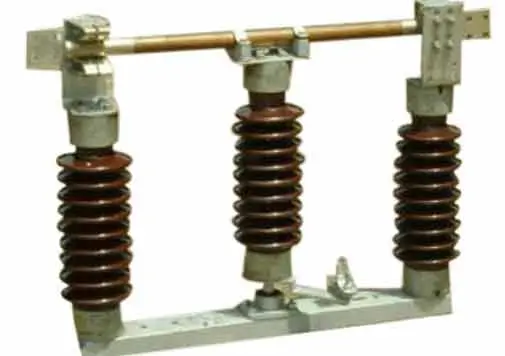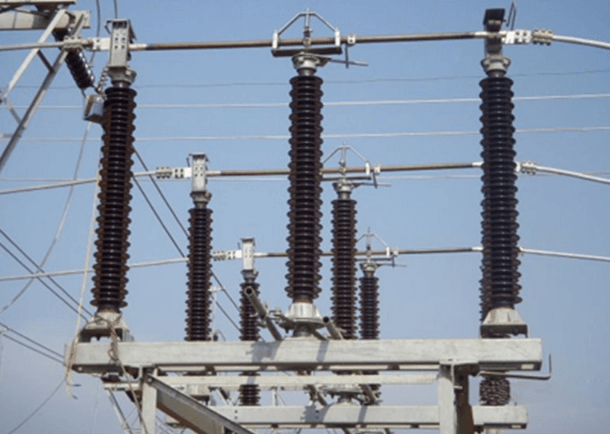An Electrical Isolator, also known as a disconnector, is a manual mechanical switch used to disconnect electrical equipment from the power system. Unlike circuit breakers, isolators operate under no-load conditions and do not have arc-extinguishing mechanisms. They are essential for safely disconnecting parts of an electrical system during maintenance or repairs, providing visible confirmation that the circuit is no longer live. In electrical substations, isolators play a crucial role in ensuring the safety and protection of both equipment and personnel.

The meaning of the word Electrical Isolate is ‘disconnect’. An Electrical isolator is a manual mechanical switch that disconnects a specific part of electrical equipment from the system as needed.
Isolators are generally operated under no-load conditions or offline. They do not have any special arc extinguishing mechanism. In electrical substations, isolators are used to disconnect various equipment like transformers from the line under no-load or light-load conditions.
Difference Between Electrical Isolator and Circuit Breaker
Both Electrical isolators and circuit breakers are essentially switches that disconnect part of the circuit from the power system.
An Electrical isolator is an off-load device, whereas a circuit breaker is an on-load device. This means that an isolator cannot be operated under load, while a circuit breaker operates automatically in the event of a fault in the system. Thus, an isolator should only be operated when the circuit is disconnected from the load. Isolators do not have an arc extinguishing mechanism.
Perhaps a question is running through your mind 🙂???
If an isolator cannot be operated under load and must be operated offline, why do we use isolators?
We know that circuit breakers can automatically disconnect the line under any condition (no-load, full load, or fault). However, we cannot directly see if the circuit breaker has tripped or disconnected the line. For this reason, it is advised not to touch any part of the circuit after it trips or while the line is disconnected.
For better safety, a proper arrangement is necessary so that the open condition can be visibly confirmed before touching any part of the circuit.
Uses of Isolators
Isolators are used to disconnect equipment from the main line for repair and to stop the charging current of the transmission line.
Types of Isolators
Depending on the system’s requirements, isolators come in different types:
- Double Break Isolator
- Single Break Isolator
- Pantograph Type Isolator
Based on the location in the power system, isolators can be classified as follows:
- Bus Side Isolator: Directly connected to the main bus.
- Line Side Isolator: Located on the line side, with any feeder.
- Transfer Bus Side Isolator: Directly connected to the transfer bus.
Rules for Opening and Closing the Circuit Isolator
For Opening:
- First, open the circuit breaker.
- Then, open the isolator.
- Close the earthing switch.
For Closing:
- First, open the earthing switch.
- Then, close the isolator.
- Finally, close the circuit breaker.
Why Isolators are Installed on Both Sides of Circuit Breakers

When repairing or maintaining any low voltage line or household electrical system, an electrician feels confident after turning off the main switch and removing the fuse bridge, ensuring that the system is safe. This is the standard procedure, as an accident could occur if someone accidentally turns on the main switch.
Similarly, when fixing faults on high-tension (H.T.) lines, even after the circuit breaker operates, the line is completely disconnected using an isolator. Most circuit breakers are remotely controlled, so someone could mistakenly turn on the line.
If isolators are installed on both sides of the circuit breaker, the circuit breaker can be easily repaired by disconnecting the isolator. Therefore, even though circuit breakers are installed in the system, isolators are also used to provide additional safety for electricians.
What is the use of an electrical isolator?
An electrical isolator is used to disconnect a portion of a circuit from the power supply, ensuring safety during maintenance and repairs.
What is an isolator and MCB?
An isolator is a manual switch used to disconnect a circuit, while an MCB (Miniature Circuit Breaker) automatically disconnects a circuit in case of overload or short circuit conditions.
What does an electronic isolator do?
An electronic isolator separates electrical components, preventing unwanted electrical interactions while allowing safe disconnection of circuits.
What is the difference between a breaker and an isolator?
A breaker can interrupt the circuit under load conditions and handle fault currents, while an isolator is used to disconnect a circuit only when no current is flowing.



